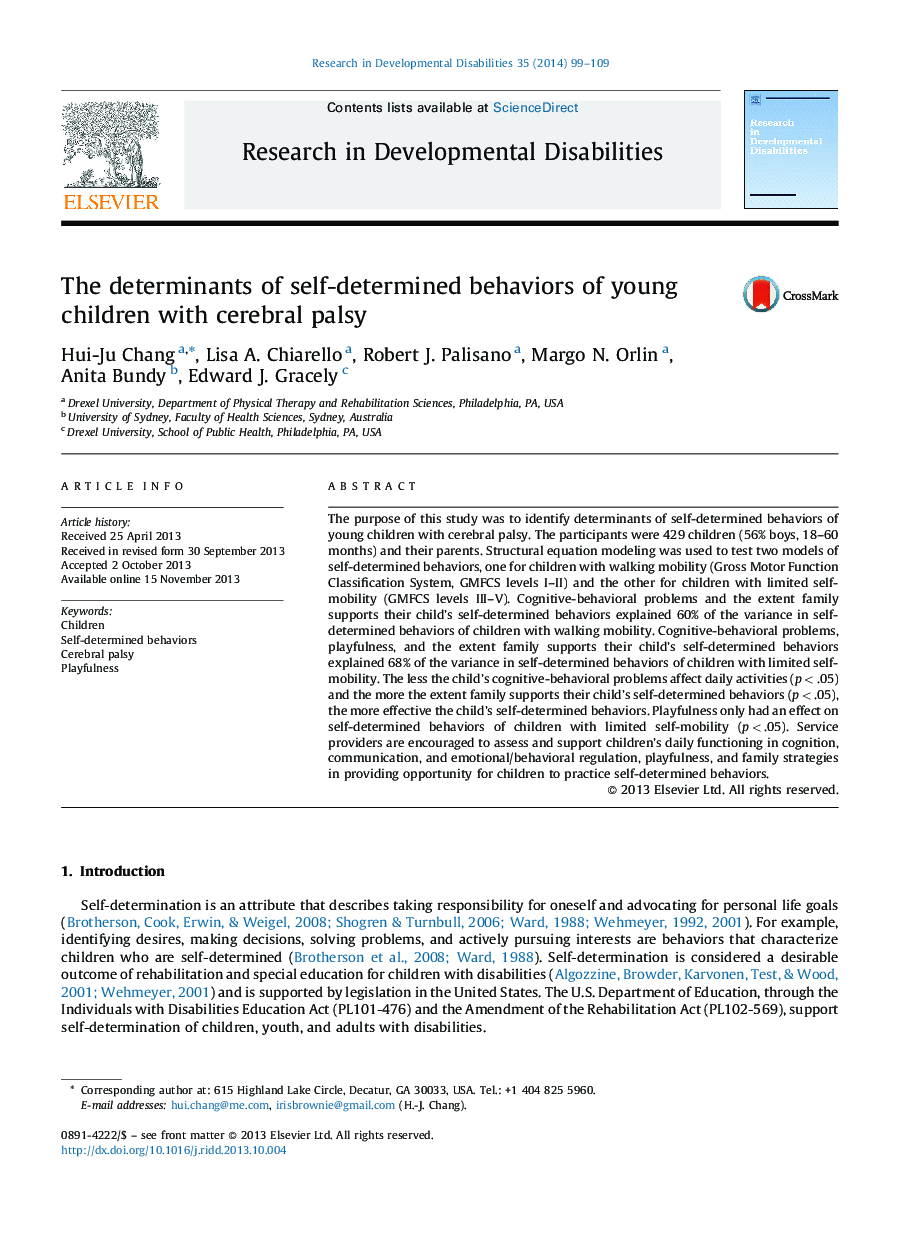| Article ID | Journal | Published Year | Pages | File Type |
|---|---|---|---|---|
| 10317509 | Research in Developmental Disabilities | 2014 | 11 Pages |
Abstract
The purpose of this study was to identify determinants of self-determined behaviors of young children with cerebral palsy. The participants were 429 children (56% boys, 18-60 months) and their parents. Structural equation modeling was used to test two models of self-determined behaviors, one for children with walking mobility (Gross Motor Function Classification System, GMFCS levels I-II) and the other for children with limited self-mobility (GMFCS levels III-V). Cognitive-behavioral problems and the extent family supports their child's self-determined behaviors explained 60% of the variance in self-determined behaviors of children with walking mobility. Cognitive-behavioral problems, playfulness, and the extent family supports their child's self-determined behaviors explained 68% of the variance in self-determined behaviors of children with limited self-mobility. The less the child's cognitive-behavioral problems affect daily activities (p < .05) and the more the extent family supports their child's self-determined behaviors (p < .05), the more effective the child's self-determined behaviors. Playfulness only had an effect on self-determined behaviors of children with limited self-mobility (p < .05). Service providers are encouraged to assess and support children's daily functioning in cognition, communication, and emotional/behavioral regulation, playfulness, and family strategies in providing opportunity for children to practice self-determined behaviors.
Keywords
Related Topics
Life Sciences
Neuroscience
Behavioral Neuroscience
Authors
Hui-Ju Chang, Lisa A. Chiarello, Robert J. Palisano, Margo N. Orlin, Anita Bundy, Edward J. Gracely,
